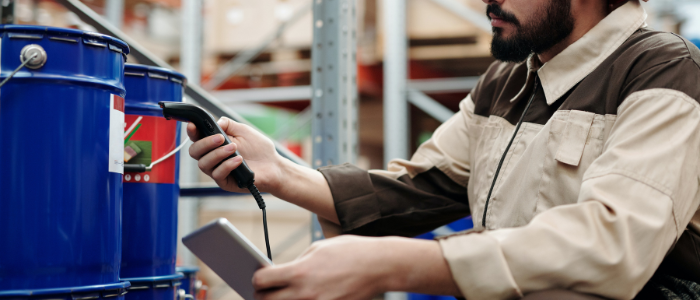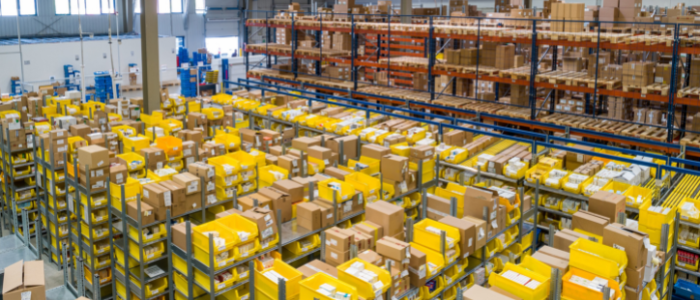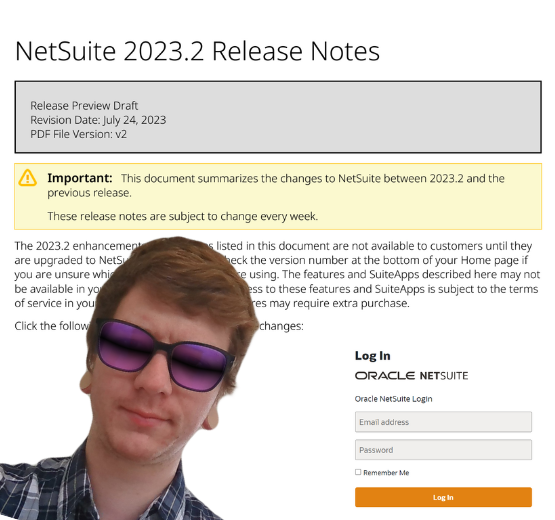In the rapidly evolving wholesale distribution arena, there’s no room for inefficient operations. Customer expectation around ecommerce is continually increasing, with product availability, communication around order progress and speed of delivery being high on their agenda. Many businesses have – quite rightly – turned to technology to tackle pain points within distribution processes and to increase customer satisfaction: having a unified omnichannel commerce platform that provides a real-time, 360 degree view of a business paves the way for success.
One development in this area is mobile scanning. As the scanner market continues to grow, it is transforming many firms involved in the management of storage and movement of goods. However, it is estimated that only around half of businesses are using barcodes in their warehouse and fulfilment centres, despite the numerous benefits and ease of creation. Even for small businesses who may think this technology is out of reach, mobile scanning has become much less expensive and therefore more accessible – and the benefits will far outweigh the cost when used as part of a Warehouse Management System (WMS) such as Oracle NetSuite.
Negating the risk of inaccuracy
With half of retail and wholesale distribution businesses still relying on spreadsheets to manage warehousing, manual data inputting processes carry a much higher error risk. The manual transcription of notes made when receiving a delivery, into a formal record later on, can easily be mis-read or mis-recorded. A mis-placed zero could have disastrous consequences for inventory management.

This risk of inaccuracy spreads right across all processes when handled manually: inaccurate picking can be a huge issue. When an item is manually located there is more opportunity for the wrong item to be picked, and if the error isn’t identified when it comes to packing and shipping an order, cost to the business is incurred both in having to get the item shipped back, and the cost of jeopardising customer satisfaction.
Using mobile scanning within a WMS, means you can not only be assured that the right details are inputted on receipt of a delivery, but also as the stock is logged, data such as the lot number, serial number, bin location and inventory status is transferred to the item record. This means that when it comes to picking later on – either for production purposes or to fulfil a customer order – the right info and exact status are available. Furthermore, with systems such as Oracle NetSuite, the mobile app can be set up to ‘force scan’ – which is a recognised practice whereby the item will not even log as stocked until the item record is scanned and properly fulfilled at the time of receiving it – further negating inaccurate records.
With this data available in real-time on mobile devices on the shop floor, all relevant operatives are armed with the right information, whether they are a production manager needing info on an item or an operations manager needing up-to-date inventory data. They don’t need to be office-based or bound to see this information.
Creating efficiencies that can’t be replicated with manual processes
The time involved in executing processes manually cannot be underestimated, and the inefficiencies are significant in a business whose main objective is to get products to customers quickly.

Mobile scanning enables the recording and tracking of items throughout the warehouse, so when it comes to picking, the exact location – such as aisle, row and bin – is immediately available for maximum efficiency. Operatives will not need to search, going to and fro in various warehouse locations to find items. It also means they can pick for multiple orders at the same time (another time-saver), and the NetSuite Pack Station feature means full accountability is provided, as data on who scanned and packed which item is recorded. Additionally, there’s no risk of committing the same inventory to multiple orders, as inventory status is in real-time – which the operative can see on their mobile scanning device.
The real-time inventory visibility is crucial for subsequent processes such as quality assurance, and understanding its exact status in the warehouse such as being prepared, picked or packed. This is increasingly important in a world where customers now expect this kind of information on the status of their order.
And for businesses that manage items that may have an expiration date, using a scanner to receive these items into inventory also ensures that specific data capture for applicable items, so they can be stored and distributed accordingly.
Want to learn about automated efficiencies within finance? See our guest blog from Tipalti about how to negate errors and time-hungry tasks across accounts payable.
A variety of scanning devices make adoption easier than ever
It’s indisputable that mobile scanning and apps increases efficiency and accuracy in a warehouse setting, but cost has been a perceived barrier to adoption. Thanks to mobile technology, it is perceived rather than a real obstacle. Apps can be enabled on mobile phones and tablets, and barcode scanning can even be performed using the camera on a smartphone. In businesses where heightened functionality is required, scanning technology will likely need to be more sophisticated but costs are not prohibitive.

A major consideration is the type of barcode your organisation will be using. For those businesses that have not as yet ventured into the barcode arena, it can feel like a mammoth task to have to assign unique barcodes to all items. It is, however, an easy task and can be generated using free online tools, or autogenerated within an inventory system. All information that the business needs to track – from item location to expiration date – should be logged.
From a tablet interface, quality engineers can perform inspections, assess standards, record and submit data, so the scanning technology goes beyond location tracking and helps fulfil quality control processes.
Accurate inventory data is a key component of any wholesale distribution business, and mobile scanning and apps facilitate this. When the information is properly recorded, the inventory management system can work optimally. This real-time accuracy is also fundamental to financial visibility such as how much cash is tied up in inventory, and for functions such as customer service, where order status information is the Holy Grail.
If you’re a retailer or wholesale distribution business looking to find out more about how Warehouse Management Systems (WMS) such as Oracle NetSuite, and mobile scanning technology, could help your business, get in touch today. One of our knowledgeable team members will be happy to help.
Keep reading

What is a NetSuite implementation partner? How do you choose one?

Technology fit for total customer service in 2024

Retail and wholesale distribution: how to improve supply chains

Ditching Sage 1000: what you need to know from businesses that have done it

6 ways AI-ready Microsoft Dynamics 365 helps chartered associations serve members

6 retail and wholesale distribution challenges and how NetSuite solves them

The most exciting features in Microsoft Dynamics 365 2023 Release Wave 2

How to manage a new NetSuite Release: one expert's update process

What’s in NetSuite Release 2023.2?

